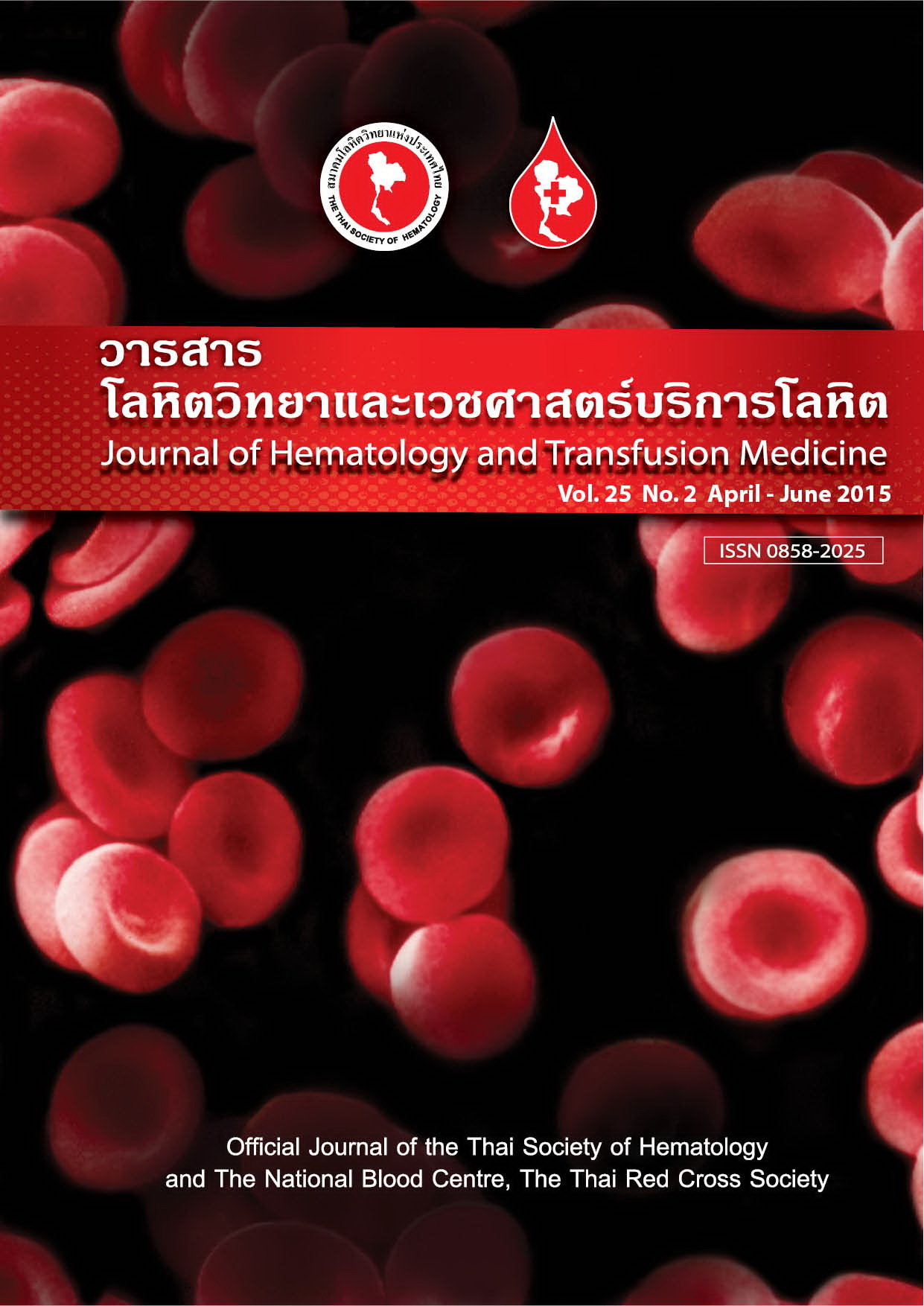Prevalence of Glucose 6-Phosphate Dehydrogenase Deficiency and Molecular Genetics of G6PD in Thai Population of Phayao Province
Keywords:
G 6-PD deficiency, G6PD gene, Phayao provinceAbstract
Background: Glucose 6-phosphate dehydrogenase (G 6-PD) plays an important role in maintenance of cellular redox
homeostasis. Mutations in the G6PD gene cause G 6-PD deficiency, which is highly prevalent in malaria endemic
area. Currently, there has been no report of G 6-PD deficiency in Phayao province. Objective: To determine
the prevalence of G 6-PD deficiency and its mutations in Thai population of Phayao province. Materials and
Methods: Four hundred blood samples from 9 districts of Phayao province were screened for G 6-PD deficiency
using fluorescent spot test (FST) and for mutations by PCR-RFLP technique. Result: The prevalence of G 6-PD
deficiency was 9.1% (24/263) in Phayao males and 5.1% (7/137) in females, highest in Maejai district (6/45, 13.3%),
and none in Pong, Chiangkham and Chiangmuan districts. The most common mutations were G6PD Union
(c.1360C>T; 7/263; 0.03) and G6PD Kaiping (c.1388G>A; 7/263; 0.03), followed by G6PD Canton (c.1376G>T; 2/263;
0.008), G6PD Viangchan (c.871G>A; 2/263; 0.008), and G6PD Chinese-5 (c.1024C>T; 1/263; 0.004). Conclusion:
The prevalence of G 6-PD deficiency among Thais in Phayao is lower than other Northern Thai populations.
G6PD Union and G6PD Kaiping are distinctly predominant, suggesting an influence from Chinese gene pools.



